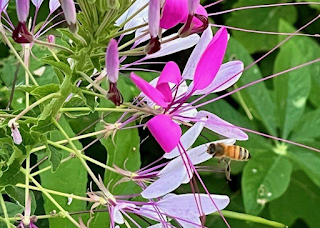The Enigmatic Language of Honey Bees: Unraveling the Choreography of Plan Bee
Explore the intricate world of honey bee communication as they perform a dance of unparalleled sophistication. This article delves into the fascinating routines within a honey bee colony, revealing the meticulous processes involved in nectar collection, honey production, and maintaining a delicate balance. From the famous waggle dance that conveys vital information about nectar locations to the less-known tremble dance signaling the need for more middle-age bees, discover the orchestration that ensures the hive's harmony. Join us in decoding the language of honey bees and gaining a newfound appreciation for the tiny yet remarkable creatures that contribute so much to our ecosystems.
Embark on a journey into the intricate world of honey bee communication with "Plan Bee: The Dance of the Honey Bee." This captivating exploration reveals the honey bee colony as a finely tuned factory, with foragers bringing in raw materials like nectar and pollen and orchestrating a delicate dance to create the finished product—honey. Delve into the division of labor, where foragers and food storers play distinct roles in the hive's functionality.
At the heart of this mesmerizing routine is the waggle dance, a figure-eight pattern performed by foragers to communicate vital information about nectar locations. This dance serves not only as a directional guide but also as a recruitment tool, enticing other foragers to join the effort. The dance's complexity extends to factors like dance duration, providing details on distance. Studies reveal that after witnessing five waggle dances, recruits acquire sufficient information on the nectar location.
In times of unfavorable weather or low resources, honey bees resort to the shake dance, a wake-up call for foragers. This dance, resembling a bugle call, mobilizes the hive's foraging force into action. The delicate balance between nectar collecting and processing is further maintained by the tremble dance, an activation signal to recruit additional nectar receivers.
Tom Seeley's research sheds light on the timing and significance of these dances, emphasizing their role in maintaining the hive's equilibrium. The supply of nectar is ever-changing, and the honey bee colony employs various dances, including the intriguing "beep," to signal when nectar collection surpasses processing capabilities.
As you delve into the intricacies of "The Dance of the Honey Bees," gain a deeper understanding of these remarkable creatures and their sophisticated communication methods. Whether you're an environmental activist, an eco-conscious citizen, or simply fascinated by nature, this journey into the honey bee's world promises insights and appreciation.
Frequently Asked Questions (FAQ):
Q1: What is the significance of the waggle dance in honey bee colonies?
A1: The waggle dance is a sophisticated communication signal used by forager bees to convey information about the distance and direction of nectar locations to other hive members.
Q2: How do honey bees recruit additional foragers to collect nectar?
A2: The tremble dance serves as an activation signal, recruiting middle-age bees to become nectar receivers when the supply of nectar exceeds the processing capacity.
Q3: What other dances do honey bees use, and why?
A3: Honey bees employ various dances, including the shake and the "beep," to maintain a balance between nectar collection and processing within the colony. These dances play a crucial role in hive dynamics.
#HoneyBeeCommunication, #PlanBee, #WaggleDance, #BeekeepingInsights, #NatureWonder

